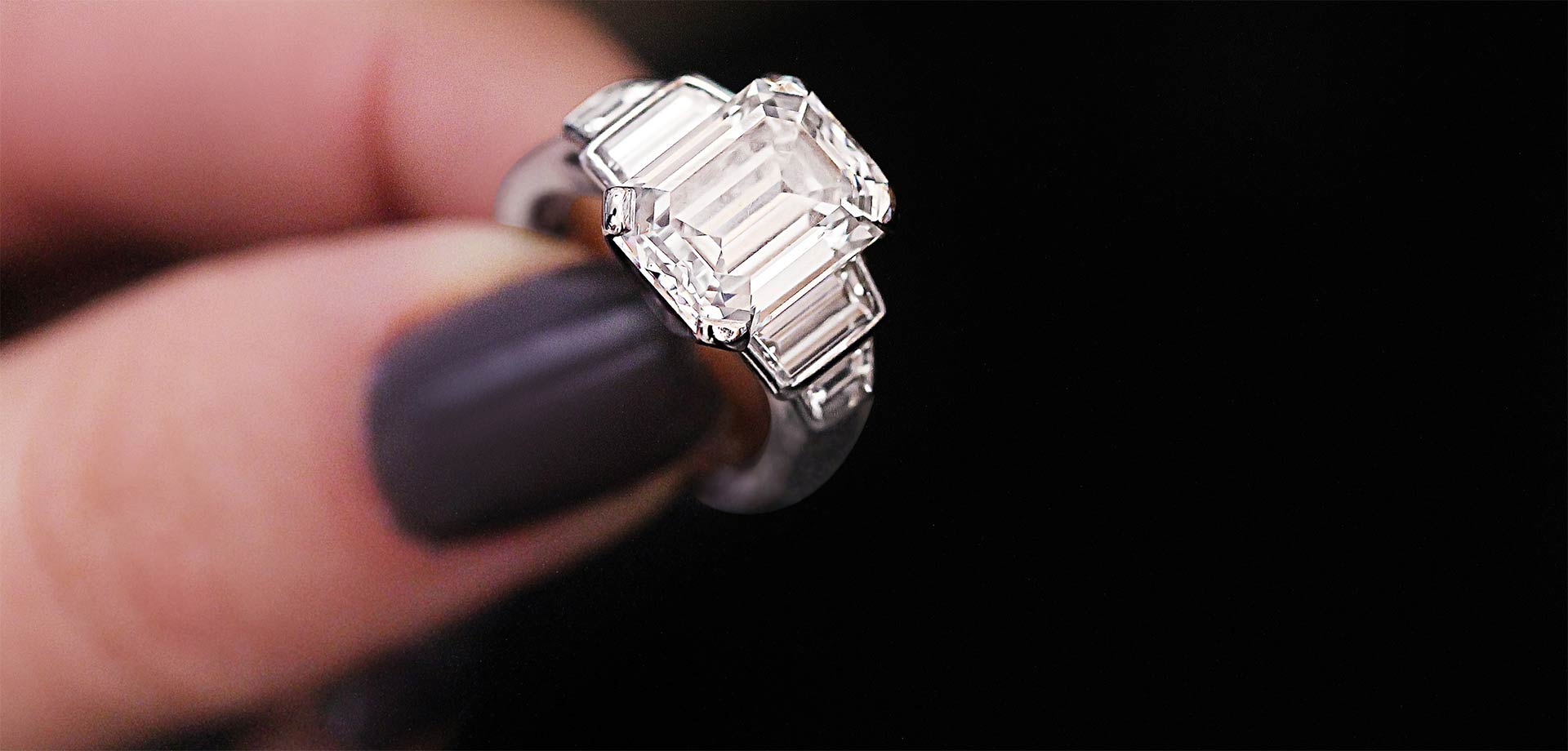Brilliance
Brilliance is referring to the cut of the diamond. A well cut diamond allows light to filter thru and reflects throughout the facets resulting in the diamond sparkling and being brilliant. If a diamond is not of ideal proportions and is too shallow or too deep, light will reflect poorly and the diamond will appear less brilliant. Lab reports such as G.I.A. have cut grades ranging from the following: poor, fair, good, very good and excellent.
In addition to the cut grade of the diamond there is also the shape of the cut. There are many different shapes available for the consumer and they range as to a consumer’s preference. The most popular cuts are round, oval, emerald, cushion, pears and princess cuts.
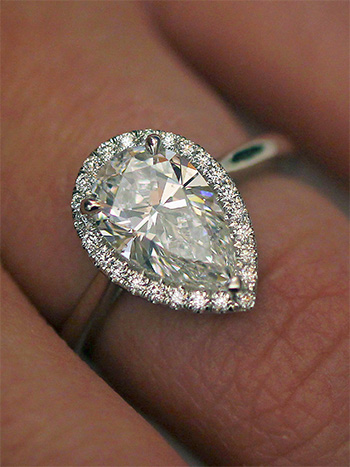
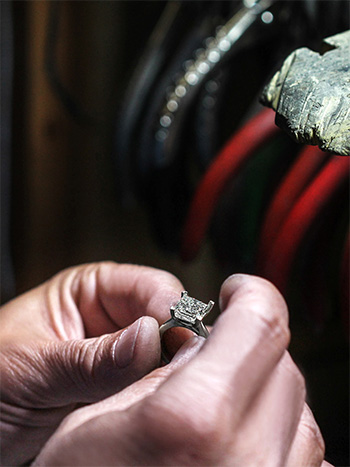
Clarity
Clarity refers to the internal purity of the diamond. The “cleanest” diamonds that have zero internal inclusions are given the clarity classification of “flawless”. This means that they have no inclusions or blemishes which are small marks either on the outside or inside of the diamond. Diamonds with a very high quality clarity classification may have small inclusions.
The rating of clarity from best to lowest quality is as follows: Flawless (FL), Internally Flawless (IF), Very Very Slightly Included (VVSI1 and VVSI2), Very Slightly Included (VS1 and VS2), Slightly Included (SI1 and SI2) and Included (I1, I2 and I3).
Carat Weight
Diamonds are measured in carats which reflect the weight or size of a diamond. There are 100 points that add up to 1.00ct. Carat weight has nothing to do with the quality of the diamond. When purchasing a diamond you should take into account the wearer’s size preferences as well as the size and shape of her hand before deciding on the right size.
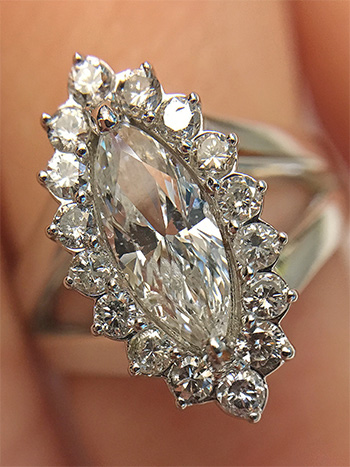
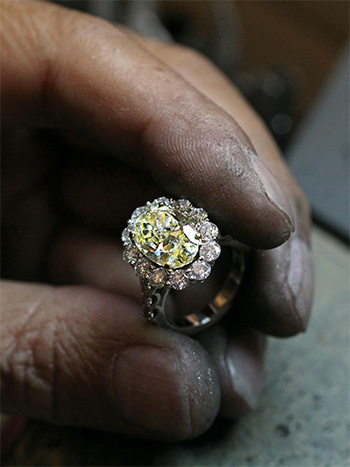
Color
The color of a diamond ranges from absolutely colorless to visibly yellow. There is not much difference to the naked eye for higher grades of color i.e. D to F. After the three highest color grades, a faint yellow tint begins to appear and gets deeper and more noticeable as you go further down the color scale.
The color scale from colorless to yellow is graded as follows: D (Blue White), E (Ice White), F (Fine White), G (White), H (Top Commercial White), I (Commercial White), J (Top Silver), L (Top Silver), L (Silver Cape), M (Light Cape).
Fancy Diamonds are diamonds with an especially deep color hue such as pink or yellow.
A diamonds florescence is also considered. Fluorescence appears when a diamond is exposed to ultraviolet light, but usually has no effect on a diamond in regular light conditions.
Grading Scale
Use the slider to see color grade details or view the Color Grade Chart below.
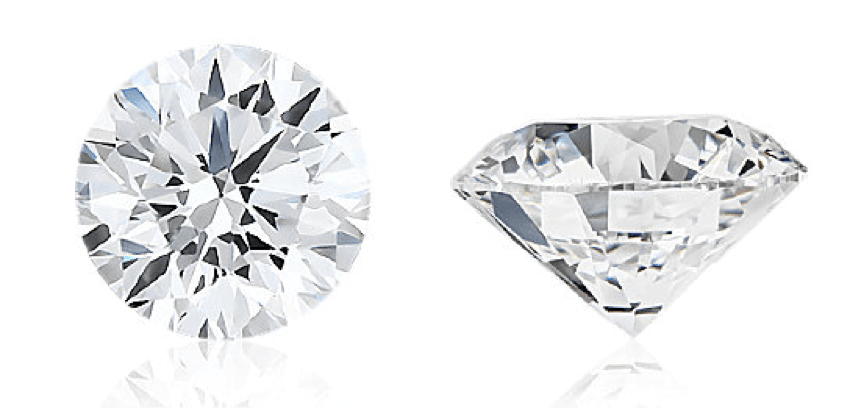
E
F
G
H
I
J
K-Z
Fluorescence is the visible light some diamonds emit when they are exposed to invisible ultraviolet (UV) rays. On a GIA diamond grading report, fluorescence refers to the strength, or intensity, of the diamond’s reaction to long-wave UV, which is an essential component of daylight. The light emitted lasts as long as the diamond is exposed to the ultraviolet source.
Approximately 25% to 35% of the diamonds submitted to GIA over the past decade, exhibit some degree of fluorescence. However, only 10% of those show strengths of fluorescence that may impact appearance (i.e., strengths noted on laboratory reports as medium, strong or very strong). In more than 95% of the diamonds that exhibit fluorescence, the color seen is blue. In rare instances, the reaction is yellow, white or another color.
WHAT IMPACT DOES FLUORESCENCE HAVE ON THE APPEARANCE OF A DIAMOND?
GIA studies show that, for the overwhelming majority of diamonds, the strength of fluorescence has no widely noticeable effect on appearance. In many instances, observers prefer the appearance of diamonds that have medium to strong fluorescence. In rare cases, some diamonds with extremely strong fluorescence may appear hazy or oily; fewer than 0.2% of the fluorescent diamonds submitted to GIA exhibit this effect.
DOES FLUORESCENCE COMPROMISE THE STRUCTURAL INTEGRITY OF THE DIAMOND?
No. A diamond that fluoresces has the same integrity as one with no reaction to UV. Submicroscopic substitutions and/or shifts in the diamond structure can cause fluorescence as well as prevent it. Nothing in either instance inherently weakens or is bad for the diamond

Philadelphia, PA 19106
800-676-7232
215-627-8315


